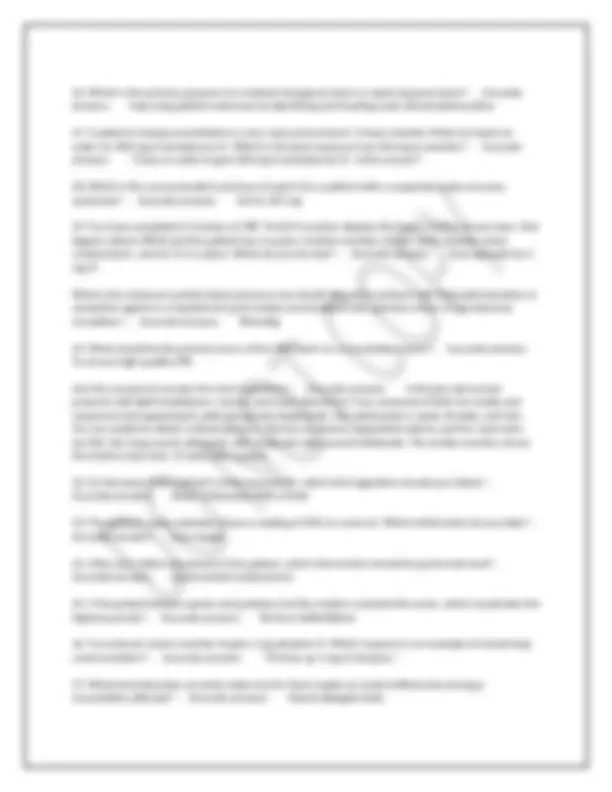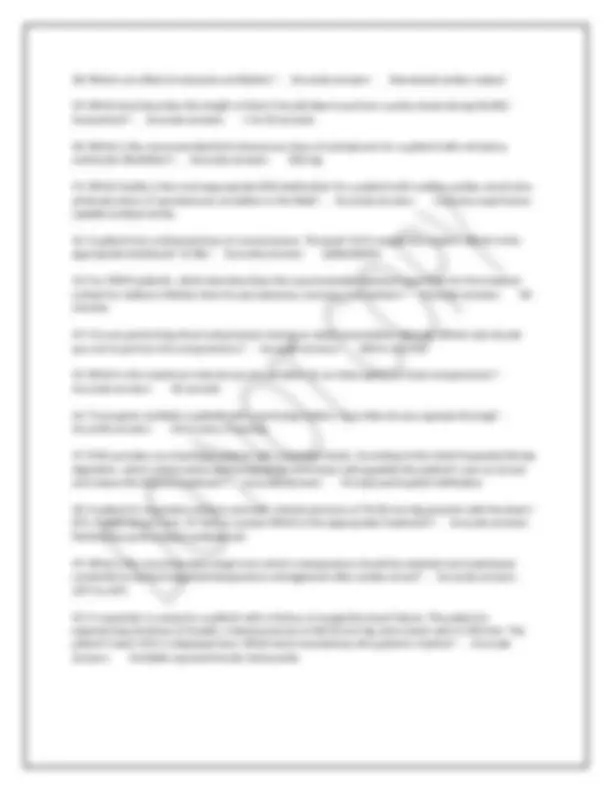2025 ACLS EXAM A QUESTIONS WITH 100%
ACCURATE ANSWERS
1. Which of these tests should be performed for a patient with suspected stroke as soon as possible but
no more than 20 minutes after hospital arrival? - Accurate answers Noncontrast CT scan of the
head
2. Which best describes this rhythm? - Accurate answers Monomorphic ventricular tachycardia
3. Which is an acceptable method of selecting an appropriately sized oropharyngeal airway? - Accurate
answers Measure from the corner of the mouth to the angle of the mandible
You are caring for a patient with a suspected stroke whose symptoms started 2 hours ago. The CT scan
was normal, with no signs of hemorrhage. The patient does not have any contraindications to fibrinolytic
therapy. Which treatment approach is best for this patient? - Accurate answers Give fibrinolytic
therapy as soon as possible and consider endovascular therapy
5. Which is the recommended next step after a defibrillation attempt? - Accurate answers Resume
CPR, starting with chest compressions
6. Which of the following signs is a likely indicator of cardiac arrest in an unresponsive patient? -
Accurate answers Agonal gasps
7. You are evaluating a 58-year-old man with chest discomfort. His blood pressure is 92/50 mm Hg, his
heart rate is 92/min, his nonlabored respiratory rate is 14 breaths per minute, and his pulse oximetry
reading is 97%. Which assessment step is most important now? - Accurate answers Obtaining a 12-
lead ECG
8. During post-cardiac arrest care, which is the recommended duration of targeted temperature
management after reaching the correct temperature range? - Accurate answers At least 24 hours
9. Which type of atrioventricular block best describes this rhythm? - Accurate answers Second-
degree atrioventricular block type I
10. Your rescue team arrives to find a 59-year-old man lying on the kitchen floor. You determine that he
is unresponsive. Which is the next step in your assessment and management of this patient? -
Accurate answers Check the patient's breathing and pulse
Use this scenario to answer the next 6 questions: - Accurate answers A 45-year-old man had
coronary artery stents placed 2 days ago. Today, he is in severe distress and is reporting "crushing" chest
discomfort. He is pale, diaphoretic, and cool to the touch. His radial pulse is very weak, blood pressure is
64/40 mm Hg, respiratory rate is 28 breaths per minute, and oxygen saturation is 89% on room air.
When applied, the cardiac monitor initially showed ventricular tachycardia, which then quickly changed
to ventricular fibrillation.












